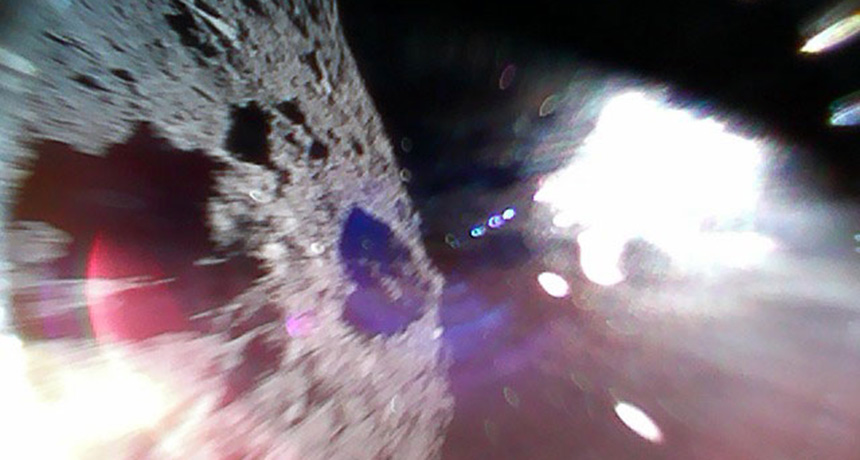The first rovers to explore an asteroid just sent photos home
The ‘Wish-you-were-here’ pictures show Ryugu’s surface

GREETINGS FROM RYUGU One of the MINERVA-II1 rovers snapped this picture while hopping across the surface of asteroid Ryugu on September 21. The gray material is the asteroid, and the bright spot is sunlight.
JAXA